Ask most people about traveling to Cuba, and they will probably conjure up images of Fidel Castro and those celebrated cigars—the two stereotypes most associated with this storied Caribbean island.
NextTribe is taking a small group of women to Cuba Feb. 17-23, 2025. Here’s a link to a video information session about the trip.
Yes, but: Cuba is so much more. It’s one of the most entrancing destinations you can find a relatively short flight away from most of the U.S. Once deeply restricted, travel to Cuba now offers boundless joy. You’ll stroll past candy-colored houses in Old Havana, a UNESCO world heritage site. You can cruise around in a Hollywood-worthy vintage car, visit vibrant markets brimming with artisans, and dance to the sounds of street musicians. Go ahead, dip your toes into turquoise waters. Sip Mojitos on a rooftop terrace as the sun melts into the horizon.
Time spent in Cuba will also teach you lessons in strength, resilience, and reinvention. This is a nation rebuilding and working to pull out of its economic woes, and it gives visitors the chance to give back with their tourism dollars and perhaps provisions brought along on the journey. The warm, welcoming people who live there make it a pleasure to chat and connect.
Are you ready for a transformative experience that’s an incredibly fun and unforgettable time? Here’s a deep dive into what not to miss when heading to Cuba.
What Americans Need to Know About Traveling to Cuba
Traveling to Cuba, just 90 miles from the U.S. mainland, as an American isn’t as easy-peasy as hoping for a plane to, say, Puerto Rico. As you probably know, America and Cuba have had a rocky history, especially since the Cuban Revolution of 1959, as the government became Communist. Restrictions were put in place, and today, while travel is much less limited, there are still certain hoops you will have to jump through. Here’s what you need to know:
- Travel Categories: American citizens must travel under one of the 12 authorized categories set by the U.S. Department of the Treasury. These include family visits, educational activities, religious activities, public performances, and humanitarian projects. The most common category for tourists is “Support for the Cuban People,” which entails engaging in activities that support independent Cuban entrepreneurs. This is how NextTribe travels to Cuba. We bring items (clothing for kids and adults, personal care products, such as shampoo and toilet paper, plus just-for-fun items and treats) to share with people we meet. This creates one-of-a-kind experiences in which we learn from and support Cuban women and children.
- Visa Requirements: You will need a tourist card, often referred to as a visa, which can be obtained through your airline or travel agency. Also, you’ll be required to specify your travel category on it.
- Currency: Cuba operates on two currencies, the Cuban Peso (CUP) and U.S. dollar. Bring cash, since U.S. credit and debit cards will not work in Cuba.
- Internet Access: Internet access in Cuba is limited and not always reliable. For those who hate being without social media or connectivity to the crew back home, this can be a little surprising at first. Prepare for occasional disconnects and take the opportunity to unplug and immerse yourself in the local culture.
It’s also worth mentioning that Cuba is a country in turn-around—one that has faced significant challenges, including to its infrastructure. This is not a glitzy, gleaming, five-star vacation spot from end to end. You will see some dilapidated areas. You may find the hot water at your hotel is at times fleeting. But seeing this emerging country and contributing to its ascension can be a particularly powerful travel experience.
Weather in Cuba: When to Travel
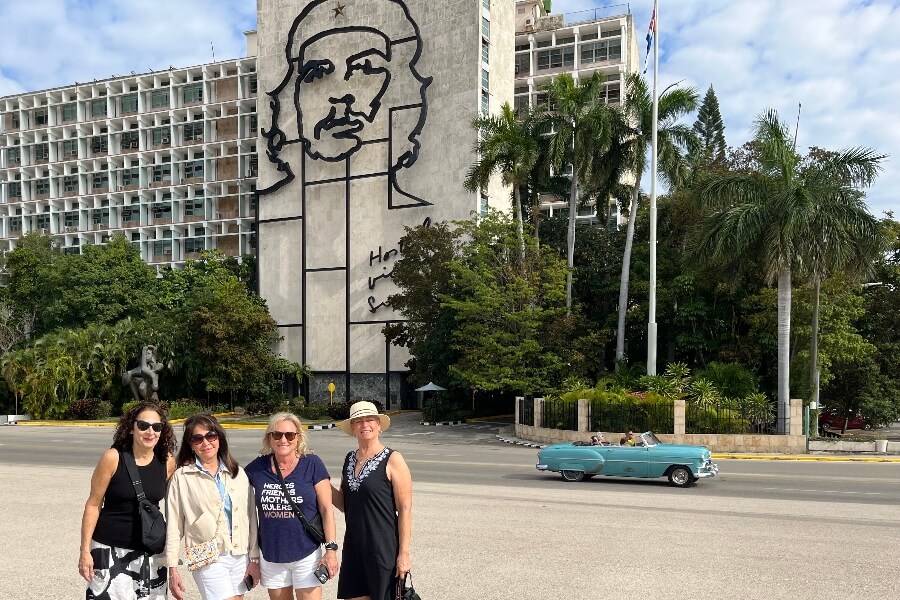
Break out your favorite sleeveless and strapless clothes! Cuba enjoys a tropical climate, with warm temperatures year-round. In terms of the best time to visit, consider this:
- Late fall through early spring (November to April): This is the dry season with cooler, pleasant temperatures ranging from 70°F to 80°F (21°C to 27°C). It’s ideal for outdoor activities and exploring the cities. That’s why our small groups typically travel to Cuba in February.
- Late spring through early fall (May to October): This is the rainy season with higher humidity and temperatures averaging 80°F to 90°F (27°C to 32°C). Afternoon thunderstorms are common, but they are typically brief. But if you don’t like getting sweaty, this may not be the best time for you to travel to Cuba.
Pack lightweight, breathable clothing (cotton and linen are great choices), sunscreen (and lots of it), a hat, your favorite sunglasses, and comfortable walking shoes. A light rain jacket or umbrella can certainly come in handy during the rainy season.
Safety in Cuba
Cuba is generally considered safe for tourists, with low crime rates compared to many other destinations. However, it’s always prudent to take standard precautions:
- Stay in well-known areas: If you’re traveling with a group, you’re probably all good; your leader knows the lay of the land. Otherwise, stick to reputable accommodations and well-traveled areas, especially at night.
- Beware of scams: Common scams include overcharging tourists. Always agree on prices beforehand, especially with taxis and street vendors.
- Health precautions: Drink bottled water and be cautious with street food to avoid tummy troubles.
Best Things to See in Cuba: UNESCO World Heritage Sites
Prepare to be dazzled. Here, some of the renowned places that reveal Cuba’s history and transport you back through the centuries.
Old Havana
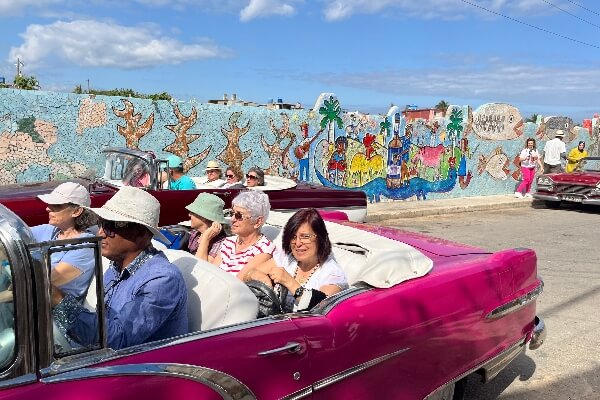
How much photo storage is available on your phone? Because in Old Havana, there are rows of centuries-old buildings, painted shades of buttercream, aqua, mint, and peony pink. We dare you not to snap a couple of dozen pictures of them glowing in the sun.
In Old Havana, there are rows of centuries-old buildings, painted shades of buttercream, aqua, mint, and peony pink.
There are also narrow calles that mash up the old and the new. And a cathedral with soaring ceilings and glorious stained glass windows that will fill you with reverence. (On our trips, we also pack in behind-the-scenes visits in this city, like going inside a female-run factory and seeing entrepreneurship in action!)
The capital city’s historic center, Habana Vieja, is a treasure trove of colonial architecture, cobblestone streets, and vibrant plazas. Key sites include:
- Plaza de la Catedral: Home to the stunning and not-to-be-missed Havana Cathedral, built in the 18th century and once home to Christopher Columbus’ remains. (It can be respectful to dress modestly when visiting religious sites, btw.)
- Plaza Vieja: A bustling square surrounded by restored buildings and lively cafes. There are actually several stunning squares in Old Havana, and each one radiates a bit of this city’s incredible architectural history.
- El Malecón: The iconic seaside promenade is perfect for a sunset stroll. This esplanade, hugging the sea, is a place where locals love to gather. Once you spend some time there, you’ll understand why.
Other UNESCO World Heritage Sites in Cuba
Check out these other notable locations:
San Pedro de la Roca Castle, Santiago de Cuba: This fortress, located in Santiago de Cuba, offers breathtaking views of the bay and is a fine example of Renaissance military architecture adapted to a Caribbean context.
Trinidad and the Valley de los Ingenios: Trinidad is a beautifully preserved colonial town with pastel-colored buildings, charming narrow streets, and historic sugar mills in the nearby valley. There are also former plantations, which can educate visitors about the sad history of slavery in Cuba. Must-see sites include:
- Plaza Mayor: The heart of Trinidad, surrounded by museums and historic buildings, this square has gorgeous sun-soaked architecture and swaying palm trees. The perfect place to snap some selfies.
- Museo Romántico: Facing the Plaza Mayor, this grand historic house was originally the Palacio Brunet, the private home of a local merchant, Count Brunet, a wealthy local merchant. Painted in saturated tropical colors, the residence was built and added onto between 1740 and 1808 and now makes a splendid place to spend an hour or so, lusting over the furnishings, the architectural detail, and the trove of European porcelain and paintings.
- Iznaga Tower: Climb this tower for panoramic views of the Valley de los Ingenios. It’s almost 150 feet high and can give you not just a great look at the surroundings but also perspective on Cuba’s history: It was originally constructed to keep watch over slaves.
Emerald green and punctuated by steep bluffs, Viñales Valley is home to traditional tobacco farming and perfect for exploring by foot or horseback.
Viñales Valley: This lush, emerald green area, punctuated by steep limestone bluffs, is located about three hours to the west of Havana. Known for its stunning natural landscapes, Viñales delivers magical vistas and is home to traditional tobacco farming (source of those famous Cuban cigars; more on that in a minute). It’s also perfect for outdoor enthusiasts, whether you appreciate gentle nature walks or rugged uphill climbs. Explore the valley through:
- Hiking and Horseback Riding: Guided tours offer insights into the local flora, fauna, and those tobacco fields, with the leaves rustling in the breeze.
- Cueva del Indio: A boat tour through this cave with a local guide offers a mesmerizing glimpse of the valley’s hidden geological formations.
Cultural Immersion: Art, Music, and Dance
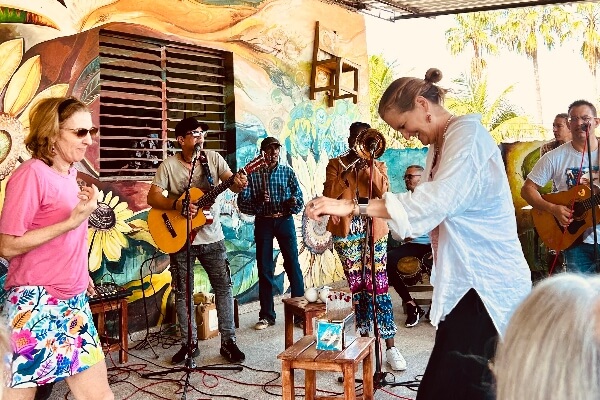
The irresistible music, sensual dance (from salsa to rumba and back again), and powerful visual arts of Cuba have their own kind of gravitational force, drawing visitors in. Don’t even think about visiting without experiencing these pleasures in person. You can engage in the island’s rich artistic traditions through these activities:
Art
- Museo Nacional de Bellas Artes, Havana: This museum houses an impressive collection of Cuban art, from colonial times to contemporary pieces.
- Fábrica de Arte Cubano, Havana: A cultural hub that combines art galleries, performance spaces, and trendy bars. It’s a great place to experience contemporary Cuban art and music.
At NextTribe, we arrange personalized visits with local artisans, which can be a fantastic way to connect one-on-one with Cubans and learn more about their traditions, influences, and creative spirit. One of our favorite outings: Visiting Jaimanitas on the outskirts of Havana, where Jose Rodriguez Fuster has turned the outside of resident’s homes into muraled and magical artworks of tiles and domes. Dubbed Fusterlandia, it’s reminiscent of Gaudi’s work in Barcelona.
We also visit the Muraleando community project in Havana, which arose from a literal garbage heap to become a center where Cubans teach children art and music. You can see it in action, interact with the kids, and buy art from the store that is housed in an old water tank, which helps support the project. Also, humanitarian travelers: This is another spot that’s ideal for distributing goods you’ve brought along.
Music and Dance
Delving into Cuban music is a fantastic way to soak up the local culture. Cuba has five types of Afro-Cuban sounds, including rumba, son, cancion Cubana, danzon, and punto guarjira. All of it is delightful, and you can experience it first-hand.
- Casa de la Música, Various: A premier venue for live Cuban music, featuring genres like salsa, son, and rumba. Enjoy performances by top Cuban bands and dance the night away.
- Buena Vista Social Club, Havana: This is an iconic experience and many visitors can’t imagine coming to Havana without a stop here. However, NextTribe travelers were disappointed by how commercialized the Buena Vista Social Club and performance has become. On the other hand, it’s good that the singers are getting the compensation they deserve.
And, of course, keep your ears attuned to the sounds of the city. You’ll encounter musicians playing in the streets, inviting tourists to dance along. Go ahead: Whether a conga line or freestyle, the rhythm is gonna get you!
We love to stop at Havana Compass for a music/dance experience with a mixture of salsa, Afro-Cuban and flamenco beats.
Another option is to take a music (bongo drumming, perhaps) or dance class…or a combo. Options include salsa, mambo, and cha-cha-cha, often to live music, available in cities like Havana and Santiago de Cuba. We love to stop at Havana Compass for a music/dance experience with a mixture of salsa, Afro-Cuban and flamenco beats. It can also be the perfect place to donate items you’ve brought, such as clothing and household supplies.
Literature
Here’s one more not-to-be-missed cultural attraction: writer Ernest Hemingway’s former home. Hemingway’s connection to Cuba is profound and enduring, reflecting a significant period of his life and literary career. He first visited the island in 1928, but it wasn’t until 1939 that he made Cuba his home. Hemingway purchased Finca Vigía, a charming estate near Havana, where he lived for nearly two decades. During this time, he wrote some of his most famous works, including “The Old Man and the Sea,” which earned him the Pulitzer Prize, and significant portions of “For Whom the Bell Tolls.”
Hemingway’s home, now a museum, offers an intimate glimpse into the author’s life and creative process. The house remains much as he left it, complete with his typewriter, personal library, and hunting trophies. Visitors can explore the rooms and grounds, gaining insight into his daily routines and the environment that inspired much of his writing.
Step inside Hemingway’s home, where he wrote his iconic novels. His typewriter sits just as he left it.
Also worth seeing: His fishing boat, Pilar, which is docked at Finca La Vigia. Hemingway had left the boat to his captain, Gregorio Fuentes, who is rumored to have inspired both the character Santiago from The Old Man and the Sea and Eddy from Islands in the Stream.
Classes and Immersive Experiences in Cuba
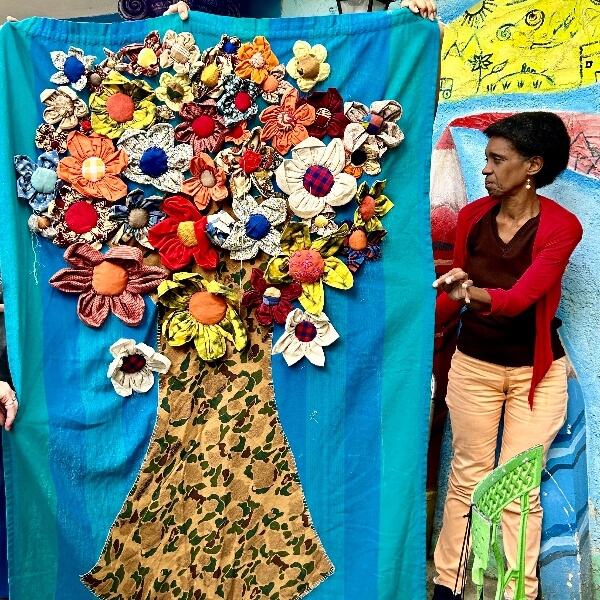
To truly connect with Cuban culture, join a hands-on class or immersive experience or two. On our trips, these are always among travelers’ favorites—the chance to not just see but to do is the kind of thing that’s remembered long after you’ve returned home.
Cooking Classes
Yes, you can stand the heat—get into the kitchen! Learn to prepare traditional Cuban dishes, such as ropa vieja (shredded beef), picadillo (ground beef hash), and tostones (fried plantains). Many classes also include a market tour to source fresh, local ingredients. On NextTribe trips, we typically go to a private casa and join with a female chef, cooking together and then savoring the dishes prepared together.
Yum…Get a taste of how to prepare classic Cuban dishes like ropa vieja and tostones with a fun, hands-on cooking class
Craft Workshops
Participate in workshops that teach traditional Cuban crafts, such as pottery, weaving, and printmaking. These classes provide a unique opportunity to create your own souvenirs and learn about local artisanship.
Cigar and Rum Tours
Explore Cuba’s world-class cigar and rum industries through guided tours. Visit tobacco farms and cigar factories to witness the meticulous process of cigar production. On NextTribe trips, we get to meet the women who craft cigars near Viñales. This is also one of the places we distribute our gifts (everything from children’s shoes to toilet paper), to help uplift Cubans.
And of course, you’re not going to visit Cuba and not have some of its famous rum. Distilleries offer tastings and insights into the history and craftsmanship behind this iconic Cuban spirit.
Exploring Cuba’s Natural Beauty
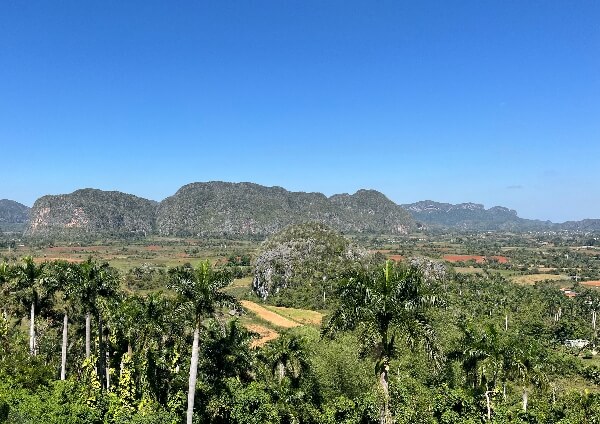
Nature lovers will not be disappointed by Cuba’s diverse landscapes. Whether you want to loll on the beach and feel the sun on your skin or want more demanding outdoor adventures, this island provides plenty.
Beaches
- Varadero: One of Cuba’s most famous and beautiful beaches, known for its powdery white sand and clear blue waters. It’s perfect for swimming, sunbathing, and water sports.
- Playa Ancón, Trinidad: Located near the town of Trinidad, this beach is ideal for a day trip. Its tranquil waters are great for snorkeling and diving in its crystalline waters.
National Parks
- Topes de Collantes, Escambray Mountains: This nature reserve offers hiking trails through lush forests, waterfalls, and natural pools. The Salto del Caburní trail is particularly popular.
- Ciénaga de Zapata: A vast wetland and UNESCO Biosphere Reserve, it’s a haven for birdwatchers and wildlife enthusiasts. Take a guided tour to explore its remarkable biodiversity.
Magical waterfalls, beaches, wetlands, and forests: They all await in the remarkably diverse landscapes of Cuba.
Scuba Diving and Snorkeling
Cuba is renowned for its vibrant coral reefs and abundant marine life. In addition to Playa Ancón, mentioned above, top diving and snorkeling spots include:
- Jardines de la Reina: An archipelago known for its pristine coral reefs and diverse marine species, including sharks, rays, and tropical fish.
- Bay of Pigs (Bahía de Cochinos): This famous historical spot offers excellent snorkeling and diving opportunities, with colorful coral reefs and shipwrecks to explore.
Sampling the Local Cuisine
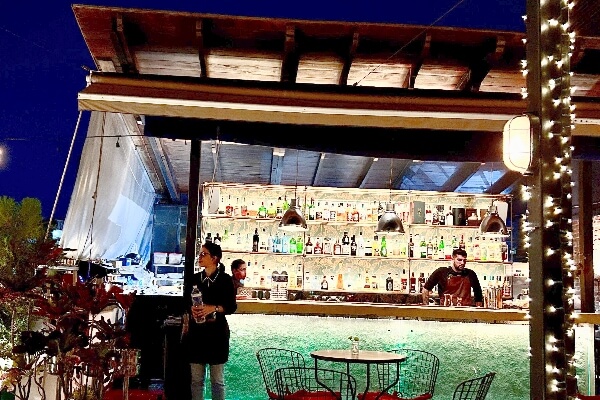
Of course, you want to sample all the incredible food Cuba is known for on your visit. First, a quick glossary of favorite local dishes:
- Ropa Vieja: This shredded beef dish cooked in a tomato-based sauce with bell peppers, onions, and garlic is a Cuban classic. It’s often served with rice and black beans.
- Arroz con Pollo: A comforting dish of chicken and rice cooked with saffron and vegetables.
- Lechón Asado: Slow-roasted pork, marinated in citrus and spices, is a staple at Cuban celebrations.
- Tamal en Cazuela: A rich, savory cornmeal dish with pork and spices.
- Camarones Enchilados: Spicy shrimp cooked in a tomato-based sauce.
- Fricasé de Pollo: A flavorful chicken stew with potatoes, olives, and capers.
- Caldo Gallego: A hearty soup with white beans, pork, potatoes, and greens.
- Ajiaco: A traditional stew made with root vegetables, meats, and corn.
- Tostones: Twice-fried plantains, often served with garlic sauce.
Top Restaurants in Havana:
- La Moneda Cubana: A fab rooftop restaurant with unbeatable daiquiris, ropa vieja, and chicken dishes.
- La Guarida: Located in a historic mansion, La Guarida offers an elegant dining experience with dishes like grilled lobster and traditional ropa vieja. Its rooftop bar also provides stunning views of Havana.
- Paladar San Cristóbal: This restaurant, housed in a charming old house, serves a variety of Cuban classics. Try the suckling pig or the house special seafood platter.
- El Cocinero: Set in a former cooking oil factory, El Cocinero combines industrial chic with gourmet cuisine. Don’t miss their signature grilled fish and eclectic cocktails.
- Vistamar: A cozy charmer with a waterfront patio sharing incredible sunset views. The reasonably priced and delectable lobster gets top marks.
Top Restaurants in Trinidad:
- Paladar Sol Ananda: This paladar offers an atmospheric dining experience in a colonial-style home. Their tamal en cazuela is particularly noteworthy.
- Vista Gourmet: Overlooking the city, this restaurant is perfect for savoring camarones enchilados while enjoying panoramic views.
- Restaurante San José: A cozy spot known for its fricasé de pollo and other hearty Cuban dishes.
Top Restaurants in Santiago de Cuba:
- Paladar Salon Tropical: Known for its homey atmosphere and delicious ajiaco, this restaurant is a favorite among locals and tourists alike.
- Compay Gallo: Offers a unique take on traditional Cuban fare, with dishes like caldo gallego and succulent tostones.
- El Palenquito: A must-visit for its fusion of Afro-Cuban flavors, highlighting the city’s diverse culinary heritage.
Cheers! What could be better than sampling Cuba’s legendary rum? Mojitos, daiquiris, and cuba libres are among the irresistible cocktails to be sipped
Cuban Rum: The Perfect Accompaniment
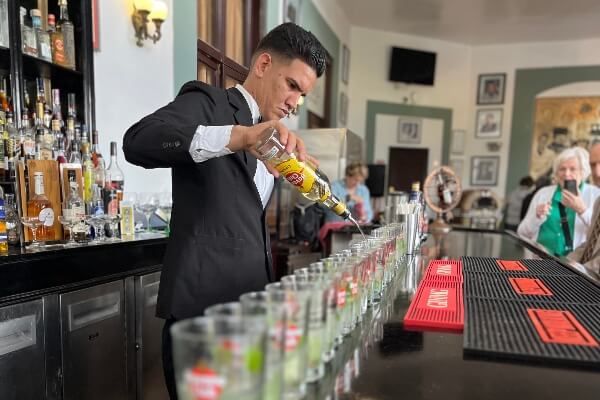
No culinary journey in Cuba is complete without sampling its legendary rum. Known for its smooth, rich flavor, Cuban rum is a staple in many cocktails.
- Mojito: A refreshing mix of white rum, lime juice, mint, sugar, and soda water.
- Daiquiri: Made famous by Hemingway, this delish cocktail blends white rum, lime juice, and sugar.
- Cuba Libre: A simple yet classic combination of rum, cola, and lime.
Here are a few favorite places to sip some of these amazing drinks:
- El Floridita (Havana): Renowned for its daiquiris, this bar was a favorite of Ernest Hemingway.
- La Bodeguita del Medio (Havana): Famous for its mojitos and historic ambiance.
- Casa de la Trova (Santiago de Cuba): Perfect for enjoying a Cuba Libre while listening to live Cuban music.
Whether or not you enjoy these spirits, there is no doubt you will want to say “Cheers!” to a transformative, terrific trip when you travel to Cuba.

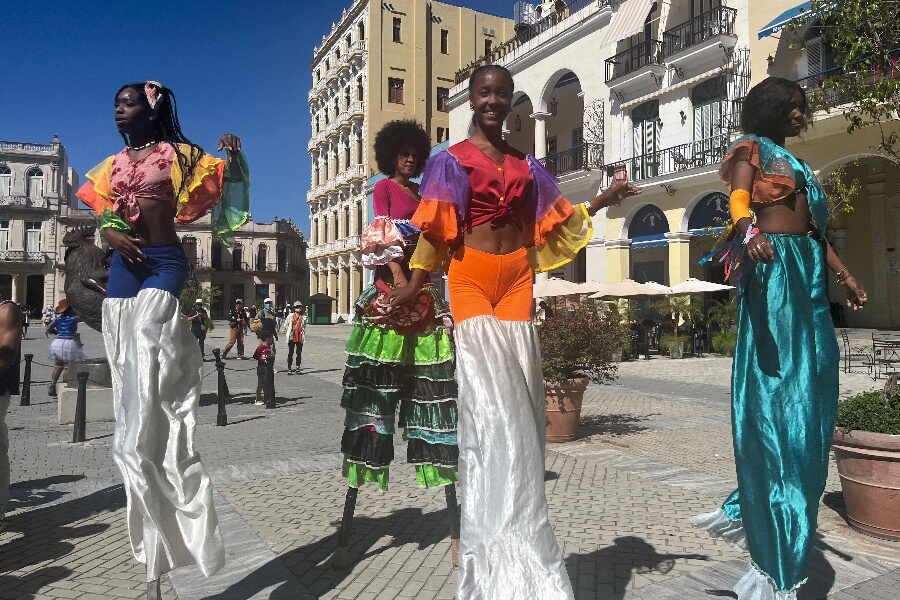

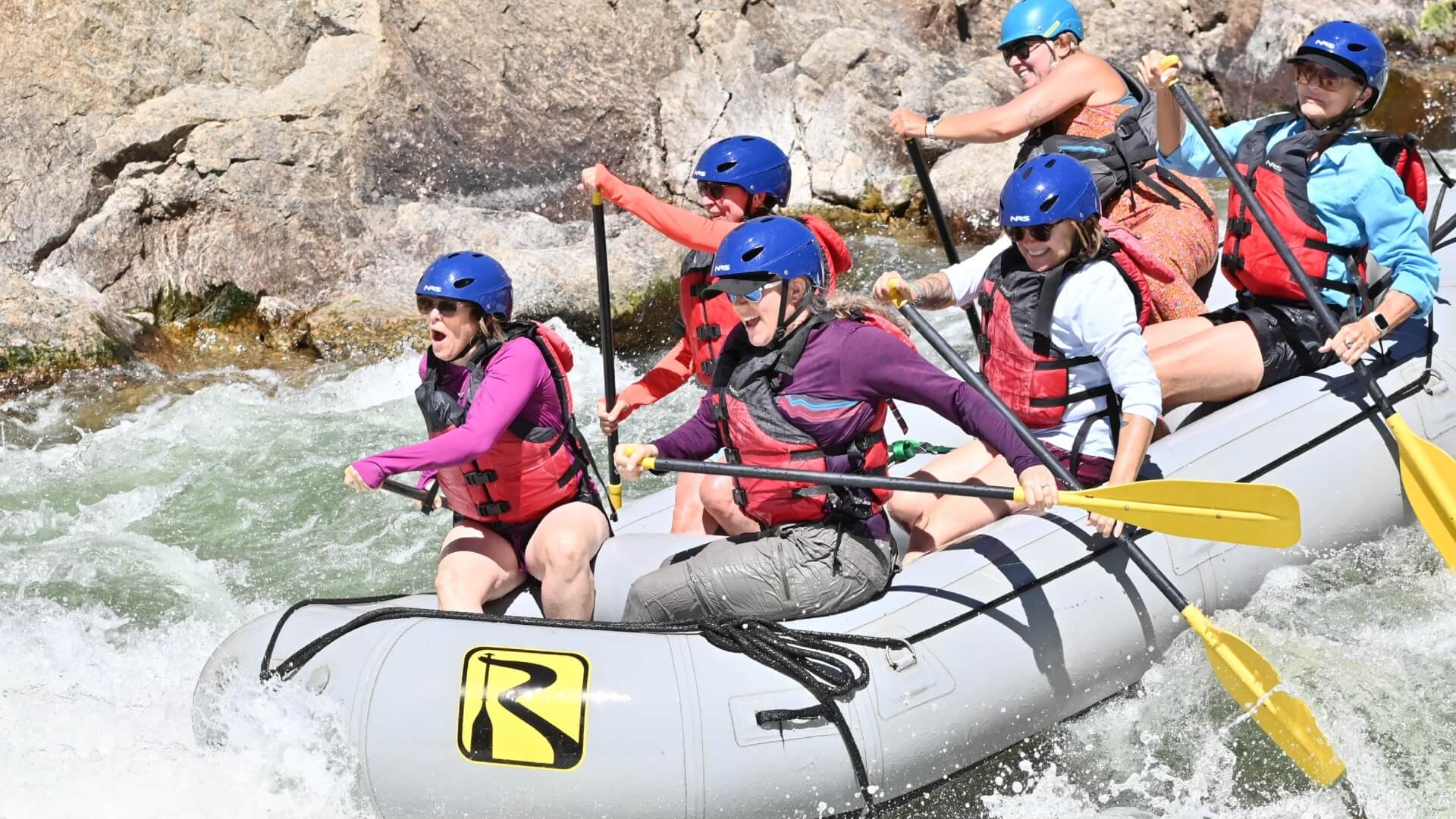

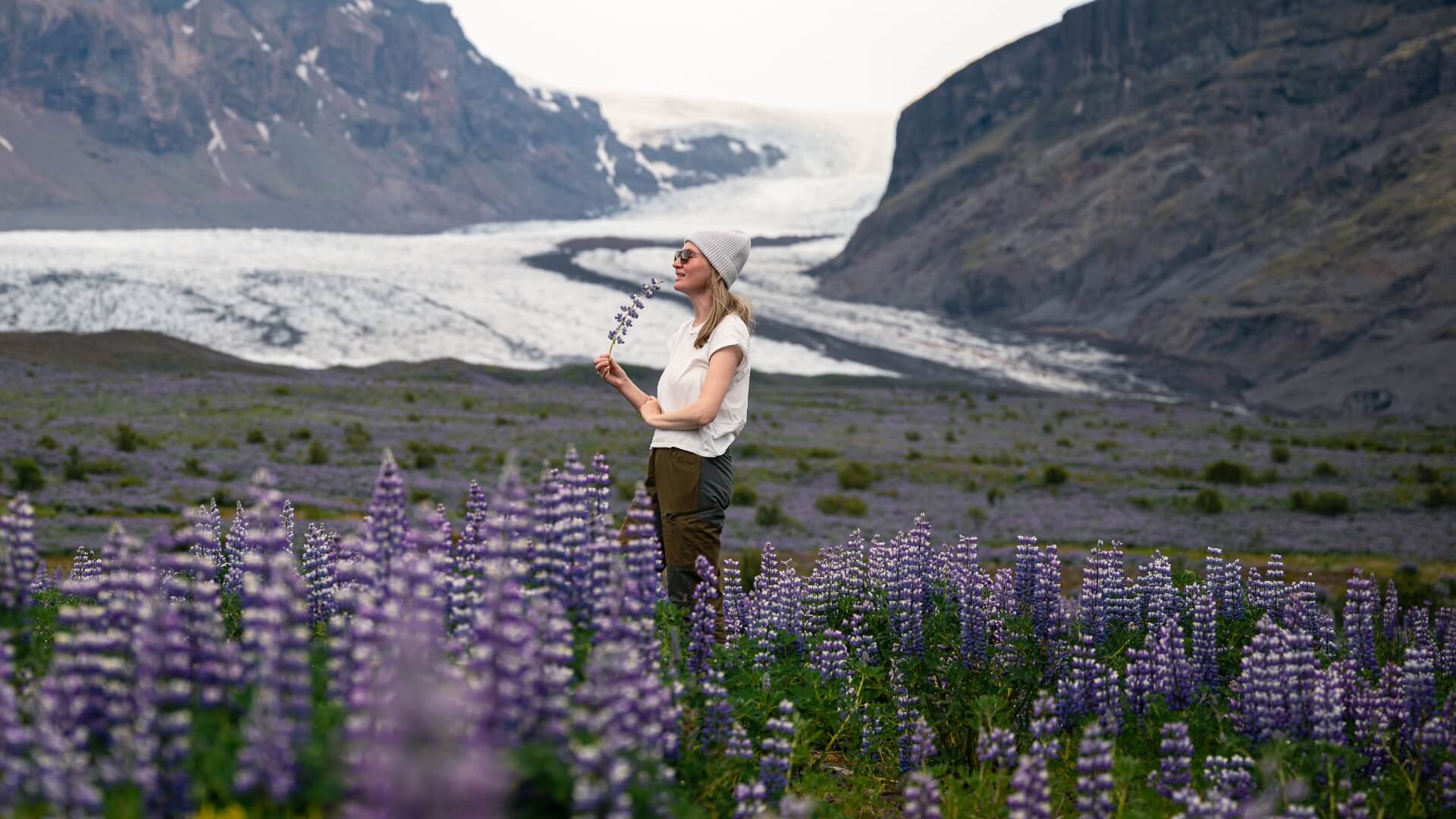



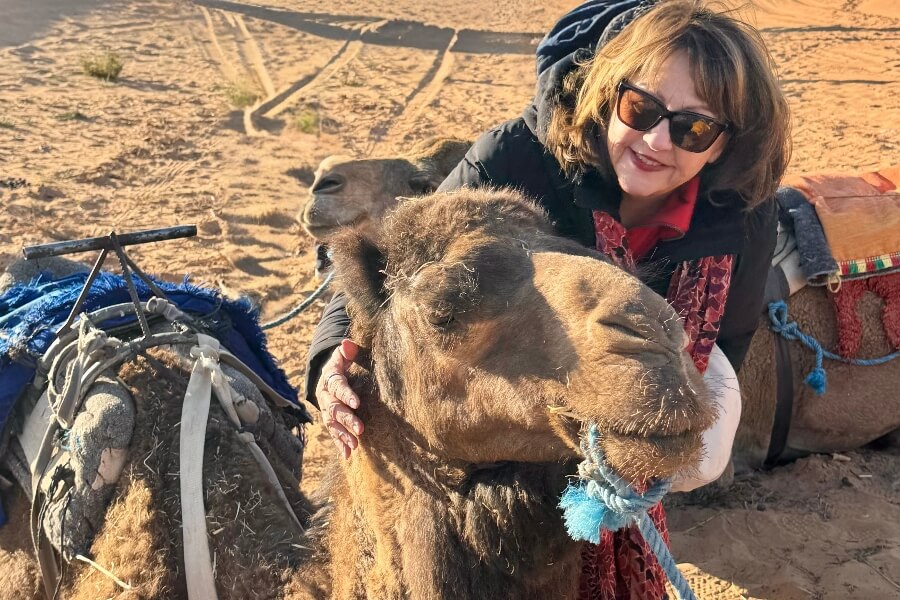
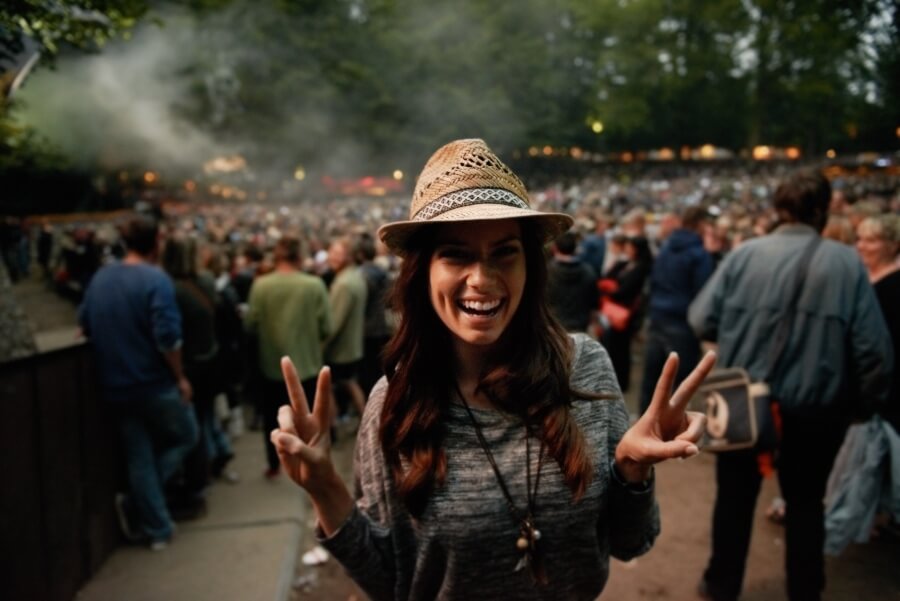
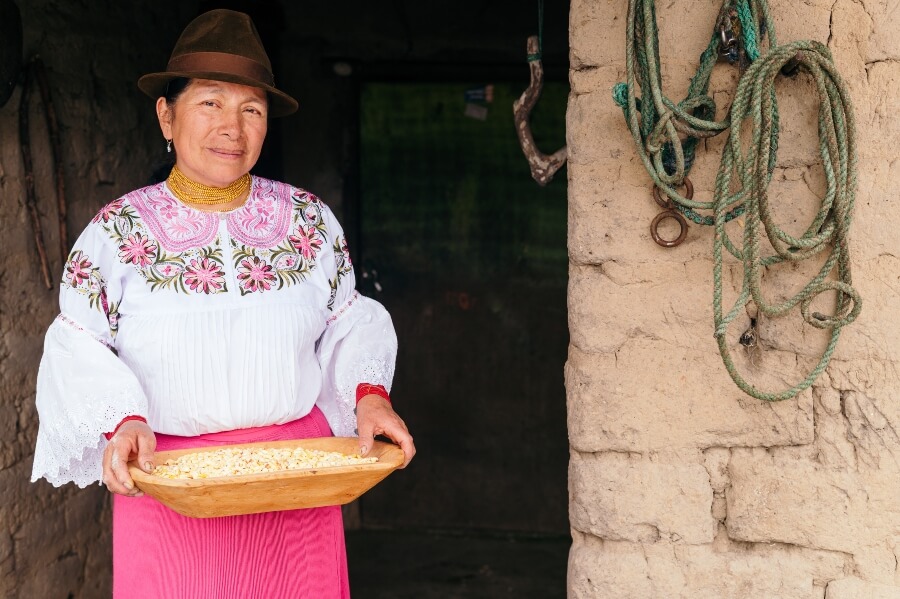
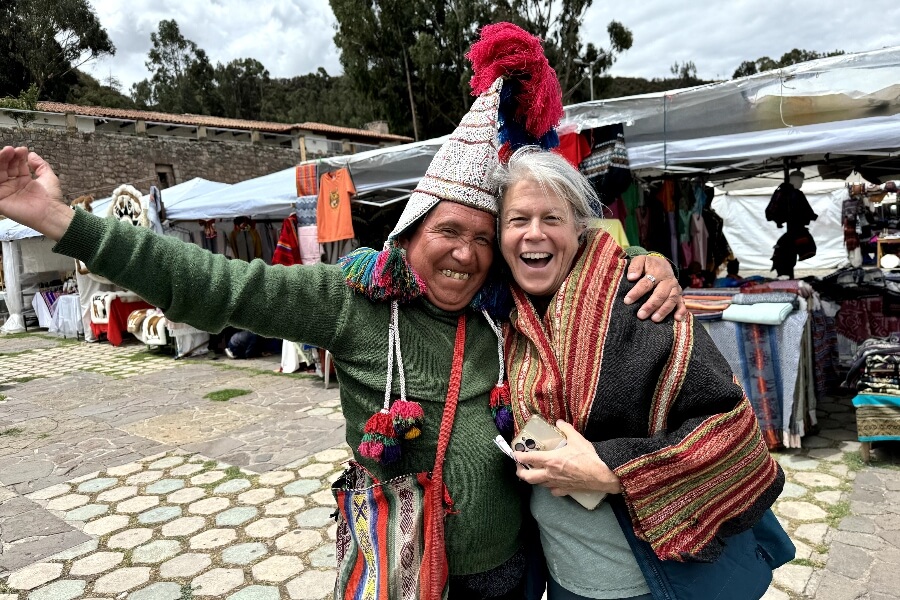

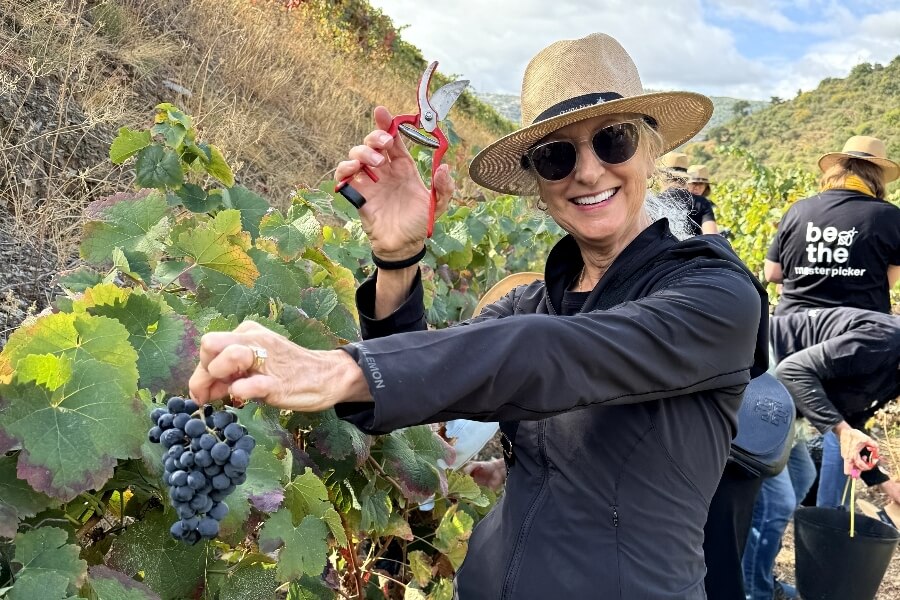
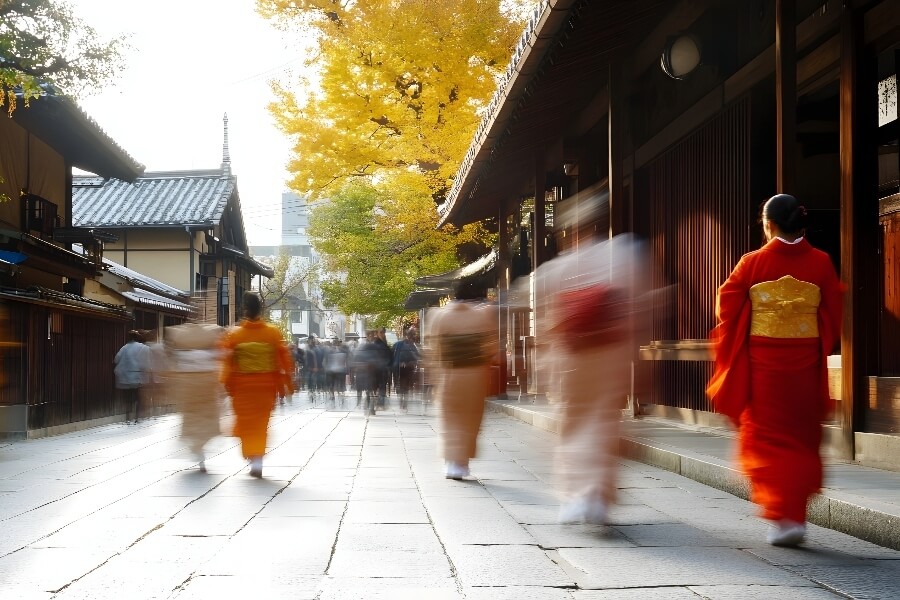

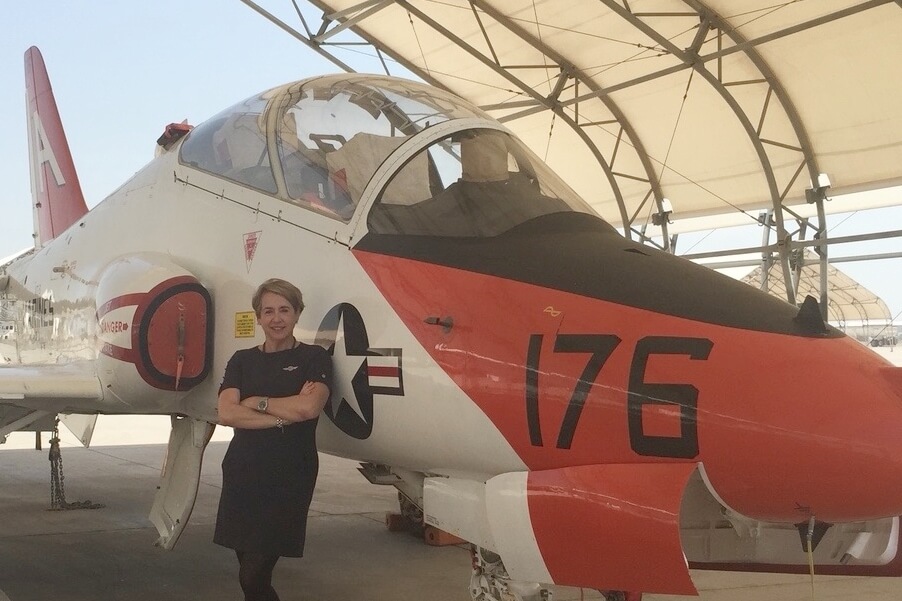

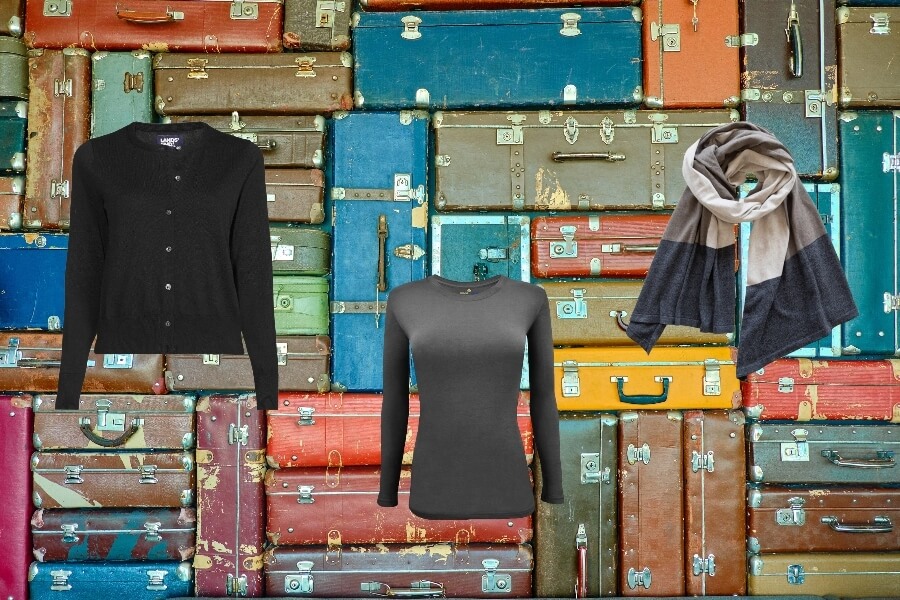

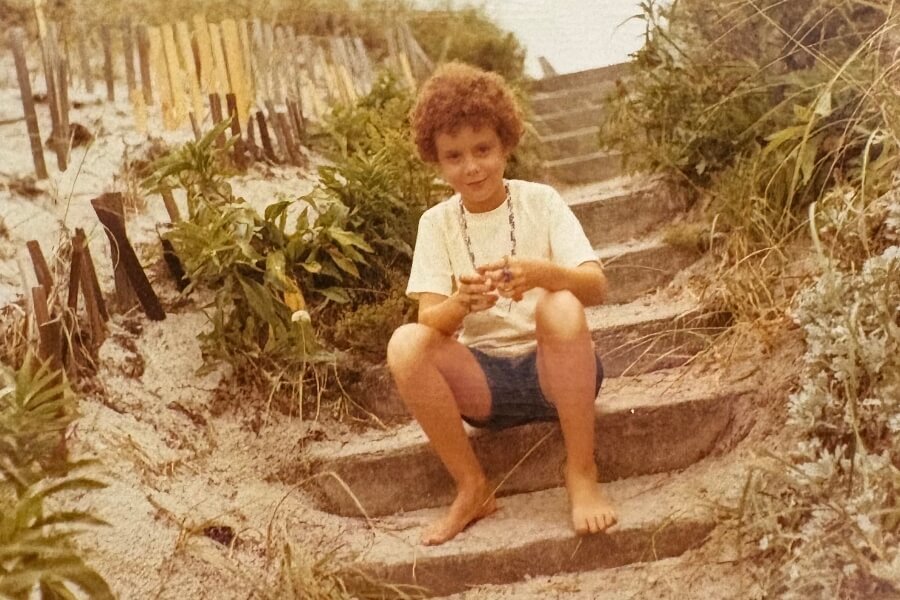


0 Comments